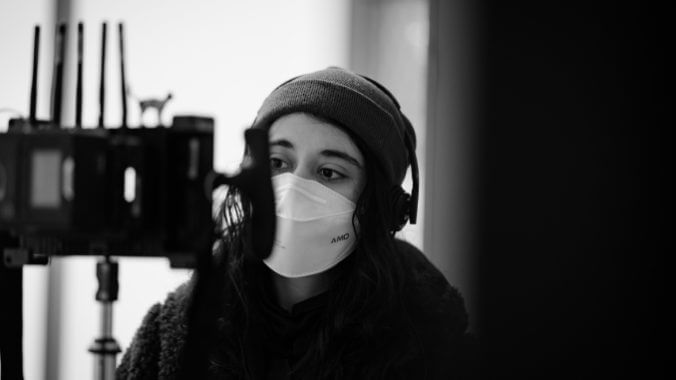Noora Niasari Interview: Shayda, Freedom, and the Nature of Light

Noora Niasari’s earliest memories are from the time she spent living in an Australian women’s shelter with her Iranian mother, who fled an abusive relationship and the wider oppressions of the Islamic Republic to secure a better life for herself and her daughter.
Five years old at the time, Niasari still remembers the experience of living in the shelter for eight months, where other women embraced her and her mother; their shared trauma, courage and resilience served as a binding agent. Niasari’s debut feature as a writer/director, Shayda adapts this personal experience into a sensitive, strongly performed drama she describes to Paste as “emotionally autobiographical.”
Starring Iranian-French actress Zar Amir Ebrahimi (who 16 years ago fled Iran herself to avoid blacklisting and imprisonment by its conservative regime) in the title role, Shayda centers on an Iranian immigrant who leaves her abusive husband Hossein (Osamah Sami) and escapes to Melbourne alongside her young daughter Mona (Selina Zahednia). On their own in a foreign land, the pair find refuge in a women’s shelter, run by supportive Joyce (Leah Purcell), where Shayda fights a custody battle to protect their hard-won freedom.
Australia’s official submission to the Oscars, Shayda strikes a narrative and visual balance between conveying the oppressive tension and internalized paranoia many domestic abuse survivors experience and capturing the moments of catharsis and hope that accompany their journey toward liberation. Set around Nowruz, or Persian New Year, Shayda also reflects ideas of renewal and rebirth that showcase joyous, nourishing aspects of Iranian culture and tradition.
After filming Shayda in 2022, the Tehran-born Niasari watched on as the women of Iran led widespread protests, inflamed by the death of 22-year-old Jina “Mahsa” Amini in police custody. Their struggle, united by the slogan “women, life, freedom,” continues today, as women and girls risk torture and execution for defying compulsory hijab laws and resisting the country’s Islamist regime.
“I’m really humbled by the fact that this film can illuminate and shine a light on the injustices women in Iran face and continue to face,” Niasari tells Paste. “This revolution is not over.”
Shayda, which premiered at the 2023 Sundance Film Festival, is playing in New York and Los Angeles; it opens in Chicago on March 8 as part of a wider platform rollout, via Sony Pictures Classics.
Paste: You traveled to Park City, Utah, for the world premiere of Shayda at the 2023 Sundance Film Festival; the film won the Audience Award in the World Cinema Dramatic competition. What was it like to share this story in that setting?
Noora Niasari: We had a huge contingent for our film at Sundance, with 20-plus people, including my family. Now, things have calmed down a little bit. It was amazing to have my mother present. She was involved in the Q&As, and we also had the real-life Joyce with us. She’s become much like my godmother after all these years, and she’s still really close with my mother. It has been a full circle journey, having them be a part of this incredible launch. I think it was very cathartic and meaningful for them.
Shayda was inspired by your childhood, particularly by your experiences living in a women’s shelter with your mother. How did you begin the process of revisiting your past to adapt those experiences into a feature film?
I lived in the women’s shelter when I was five years old, in Brisbane, with my mother. The film has really lived inside me since then. Becoming an adult, becoming a filmmaker, there was something about the world of the women’s shelter, and the strength and courage of my mother, that was always inspiring to me.
-

-

-

-

-

-

-

-

-

-

-

-

-

-

-

-

-

-

-

-

-

-

-

-

-

-

-

-

-

-

-

-

-

-

-

-

-

-

-

-








































